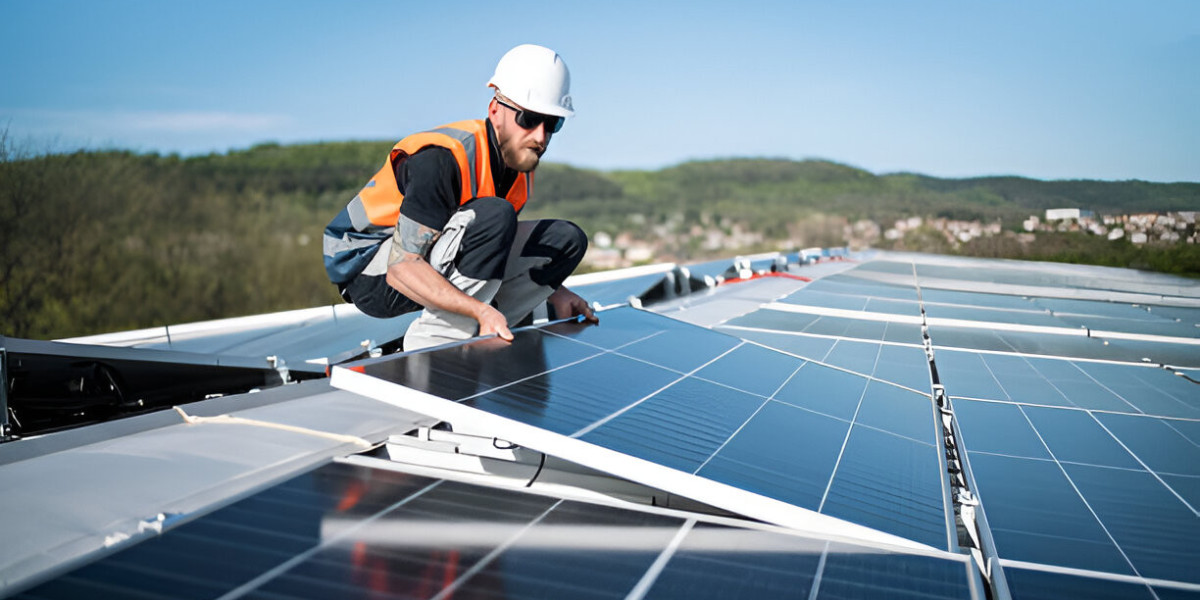Switching to solar energy is a great way to reduce electricity bills and contribute to a greener planet. Many homeowners wonder how long the process takes when opting for solar panel installation services. While the timeline varies based on several factors, understanding each stage can help set realistic expectations. The installation process involves multiple steps, including site assessment, design, permitting, equipment procurement, installation, inspection, and final activation. Each of these stages contributes to the overall timeline and can be influenced by factors such as weather conditions, local regulations, and the efficiency of the solar provider.
Initial Consultation and Site Assessment
The first step in installing solar panels is an initial consultation with a solar provider. During this stage, professionals assess your energy needs, roof condition, and sun exposure to determine the best system for your home. The consultation includes reviewing your current electricity usage, evaluating shading issues, and discussing available financing options. This process typically takes one to two weeks, depending on the availability of solar professionals and the homeowner's schedule. A thorough site assessment is crucial, as it ensures that the solar system will be both efficient and cost-effective in the long run.
Designing the Solar System
Once the site assessment is complete, engineers and designers create a solar system tailored to your home. This step ensures maximum efficiency and compliance with local regulations. The design process involves selecting the right type and number of solar panels, determining the optimal placement, and planning the electrical components. Additionally, software simulations may be used to estimate energy production based on historical sunlight data. The design phase can take anywhere from one to three weeks, depending on the complexity of the system and the speed at which necessary adjustments are made.
Securing Permits and Approvals
Before beginning the actual installation, necessary permits and approvals must be obtained. Local governments and utility companies have specific requirements that must be met before installation. For most residential solar installation services, this process can take anywhere from two to six weeks. The permits ensure that the installation adheres to building codes, electrical safety regulations, and zoning laws. The timeframe for this step depends on the efficiency of the permitting office and any additional requirements, such as homeowner association approvals. Delays in this stage are common, so working with an experienced solar provider who understands the local requirements can help streamline the process.
Ordering and Delivering Equipment
After obtaining the required permits, the next step is ordering the necessary equipment, including solar panels, inverters, and mounting systems. While most suppliers have these components in stock, occasional delays can occur due to high demand or supply chain issues. On average, this stage takes one to four weeks. Choosing high-quality components is essential for the longevity and performance of the system. Factors such as manufacturer availability, shipping logistics, and local warehouse stock can influence the delivery timeline. Homeowners can work with their solar provider to ensure that all necessary components are available before installation begins to avoid unnecessary delays.
Installing the Solar Panels
The actual installation is the quickest part of the entire process. A skilled installation team can usually complete the job in one to three days, depending on the size and complexity of the system. Larger solar installations or challenging roof conditions may extend this timeline slightly. The process includes mounting the racking system, installing the solar panels, connecting the inverter, and integrating the system with the home’s electrical grid. Safety measures are taken to prevent roof damage and ensure proper alignment for maximum sunlight exposure. Homeowners should ensure that they are working with experienced professionals who can complete the installation efficiently while maintaining high-quality standards.
Inspection and Final Approval
Once installation is complete, an inspection is required to ensure the system meets all safety and building code standards. The local government and utility company will conduct this final review, which can take one to three weeks. The wait time depends on local inspection backlogs. Inspectors check for proper wiring, secure panel installation, and compliance with fire safety regulations. If any issues are found, corrections may be required before approval is granted. Ensuring that the installation meets all regulatory standards is essential for both safety and system performance. Delays at this stage can prolong the timeline, but they are necessary to ensure a reliable and efficient solar energy system.
Connecting to the Grid
After passing the inspection, the solar provider works with your utility company to connect the system to the grid. A solar panel installer ensures the net metering system is correctly set up so you can start generating and using solar energy. This final connection typically takes one to two weeks. Net metering allows homeowners to send excess electricity back to the grid, often resulting in credits on their electricity bills. The utility company may require additional testing before granting permission to operate. Homeowners should stay in contact with their solar provider and utility company to track progress and resolve any last-minute issues that may arise.
Activation and System Testing
Once the system is connected to the grid, the last step is activating and testing it. The solar provider will verify that everything is functioning correctly and guide you through monitoring your system. This process usually takes a day or two. Homeowners will receive instructions on how to track energy production using a monitoring app or dashboard. The provider will also check for any potential issues, such as faulty connections or underperforming panels. Once the system is officially activated, homeowners can begin enjoying the benefits of renewable energy, reduced electricity costs, and a lower carbon footprint.
Choosing the Right Solar Company
Selecting a reliable provider can significantly impact the installation timeline. Working with the best solar companies Maryland ensures a smoother process, better-quality equipment, and faster approvals. Researching customer reviews and service offerings can help you find the right provider. Companies with a proven track record of successful installations are more likely to navigate permitting and approval processes efficiently. Additionally, choosing a provider with strong warranties and responsive customer service can offer peace of mind. Homeowners should obtain multiple quotes and compare installation timelines before making a final decision.
Conclusion
The total time for a complete solar panel installation can range from one to three months, depending on factors like permitting, equipment availability, and inspections. While the process requires patience, the long-term benefits of clean energy and reduced electricity costs make it worthwhile. By understanding each step of the process and working with an experienced provider, homeowners can ensure a smooth and efficient installation. Investing in solar energy is not just a financial decision—it is also a commitment to a more sustainable future. With careful planning and the right team, the transition to solar power can be seamless and rewarding.







